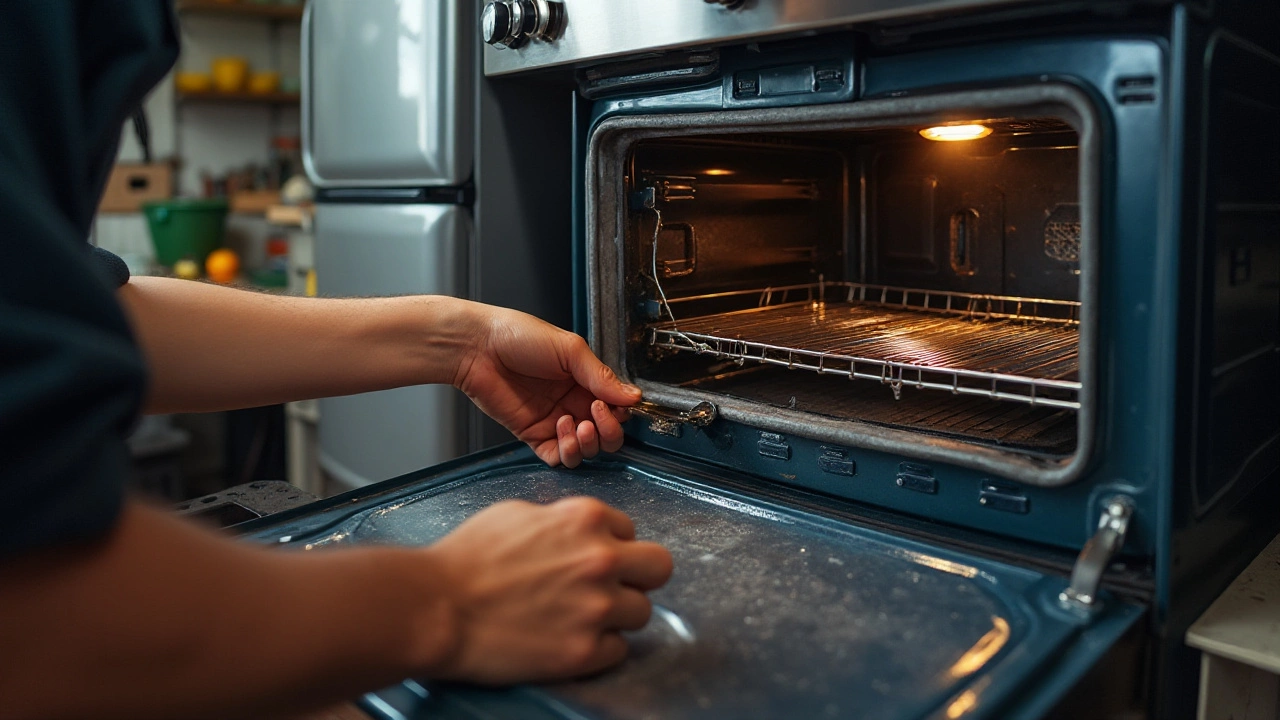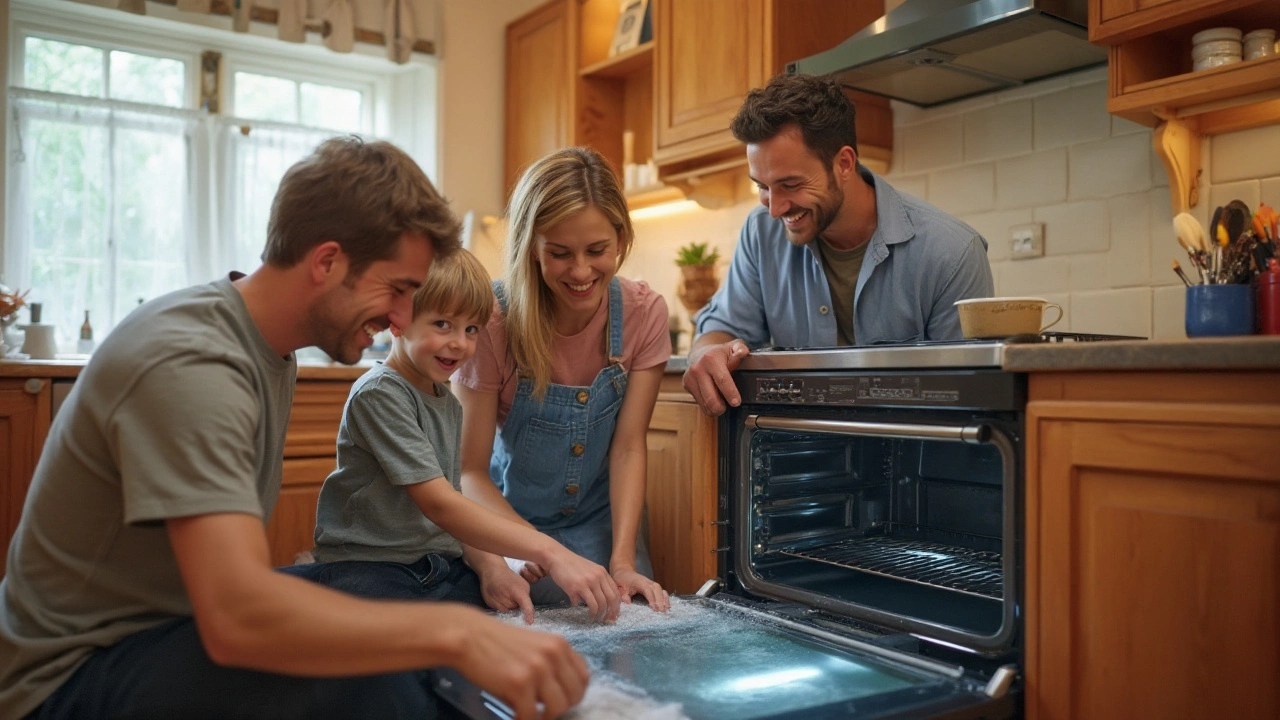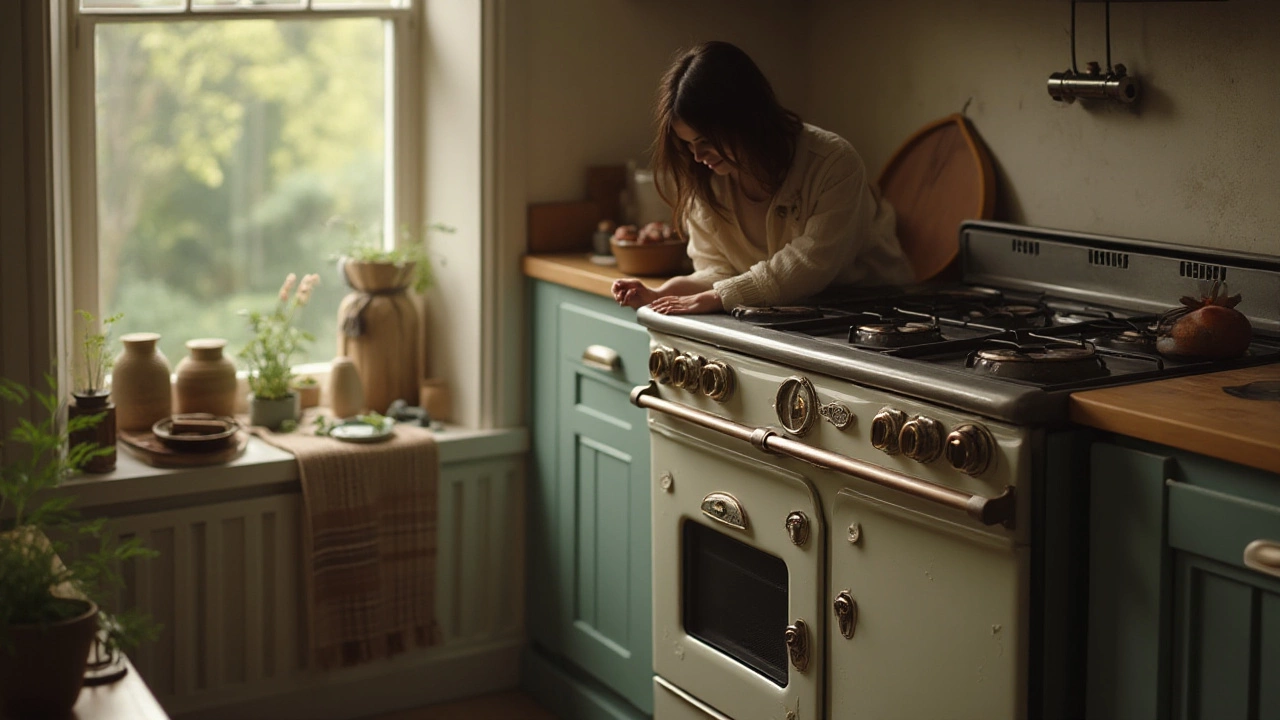Electric ovens have become a staple of modern kitchens, providing the means to create everything from simple toast to sophisticated dinners. But have you ever wondered how long your trusty oven can keep up with your culinary adventures? While some last a decade, others can serve faithfully for two, if not more. What makes the difference?
Several factors influence how long an oven will last, including its brand, how often you use it, and, most importantly, how well you take care of it. Using your oven regularly requires attention, maintenance, and sometimes a bit of repair work. To help keep your oven in top working order, let's explore everything you need to know about oven longevity and what you can do to make sure yours sticks around for the long haul.
- Understanding Oven Lifespans
- Common Issues That Limit Longevity
- Maintenance Tips for a Long-Lasting Oven
- Signs It's Time to Replace Your Oven
- Balancing Repair Costs and New Purchases
Understanding Oven Lifespans
When it comes to the longevity of electric ovens, there are numerous variables that come into play. A well-maintained oven can last anywhere from 13 to 20 years. The lifespan often varies depending on several factors, including the brand and model of the appliance. Higher-end ovens are typically constructed with more durable components, which might lead them to outlast their more budget-friendly counterparts. Regular usage is another factor. An oven that's used intensively every day might have a different life expectancy compared to one that's only used occasionally. The location of the oven in your kitchen can also impact its lifetime, as ovens that are exposed to high humidity or temperature variations tend to wear out more quickly.
Interestingly, a 2018 survey from the National Association of Home Builders pointed out that the average life expectancy for electric ovens is between 13 and 15 years. Maintenance is a key aspect to prolonging that span. An oven that benefits from regular cleaning, as well as proactive repairs, will invariably serve you longer than one that's neglected. It's also important to use the appliance according to the manufacturer's instructions. Misuse, such as slamming the oven door or cranking up the temperature unnecessarily, can shorten its life. Another influencing factor is technology advancement. Modern ovens equipped with digital controls and self-cleaning features may not necessarily last as long as their older counterparts due to the complexity of their systems.
In order to ensure your oven longevity, one needs to be aware of the specific care tips that have been prescribed by manufacturers. It’s always a good idea to consult the user manual for advice tailored specifically for your oven model. International appliance manufacturer Whirlpool emphasizes the importance of regular cleaning and advises checking the seals on oven doors as leaking heat can cause the appliance to work harder and lead to wear. One crucial piece of advice, often overlooked, is the calibration of your oven's thermometer. If your oven is not calibrated correctly, it can lead to incorrect cooking times and additional strain on the appliance.
"Ovens, like any other appliance, need regular attention and maintenance. It’s easy to take them for granted, but a little care goes a long way in ensuring your oven lasts as long as possible," says Samantha Blake, a leading home appliance expert.Therefore, spending time to understand these aspects can save you time and money in the long run. As you ponder whether an oven can indeed last 20 years, it's clear that diligence in care plays a pivotal role. Knowing how to handle your oven and maintain it correctly is essential. Proper attention and occasional professional service checks can extend the life of both your oven and its appliance lifespan.
Common Issues That Limit Longevity
Anyone who has owned an electric oven for a few years knows that it can be fraught with various issues, potentially cutting its life span short. One of the most common problems arises from the heating element. Over time, the constant heating and cooling cycle can wear it down. This deterioration can lead to uneven oven temperatures, making cooking unpredictable and often frustrating. When pies come out burnt while casseroles remain soggy, you’ll know something is awry with the heating element.
Another frequent culprit is the oven door seal, also known as the gasket. This component ensures that heat remains trapped within the oven cavity during cooking. A damages or worn-out gasket results in heat escape, causing inefficiencies and extended cooking times. It’s the sort of problem that can sneak up on you, subtly affecting energy consumption as your meals take longer to cook. If you've noticed your oven isn't heating as it used to, this could be the sign of a compromised gasket.
One cannot overlook the issues stemming from electronic control failures. As with most modern appliances, electric ovens are often equipped with digital panels. These can malfunction due to wear or power surges, leading to loss of control over temperature settings or timer functions. Imagine setting your oven for a roast, only to find it switched to broil instead. Such electronic mishaps cause not just inconvenience, but they can pose safety risks too. According to a report by Consumer Reports, faulty wiring and electrical components account for a significant portion of oven-related issues.
A technician from Consumer Reports highlighted, "The best way to avoid control failures is to use surge protectors and have regular inspections. Many underestimate the impact of proper electronic maintenance in extending appliance life."
Some owners also experience trouble with broken knobs or handle mechanisms. These might seem mundane but can severely limit an oven's usability. After all, without a proper grip, even setting your desired temperature can feel like a battle. In parts like these, brittle plastic is often the root cause, and it's advisable to replace them with more durable alternatives when possible.
Lastly, spills and grease splatters inside the oven can lead to more significant problems if ignored. These form impenetrable baked-on layers that insulate the interior and result in overheating. Worse yet, over time they can produce a burnt odour that persists through different dishes, an unwelcome guest at any dinner party. Consistent cleaning is key, taking care not to use excessively abrasive materials which can damage the oven’s lining.
Dealing with these issues early on
Ensuring prompt attention to such problems not only extends the life of your oven but also enhances your cooking experience. Don't let these seemingly minor issues pile up until they snowball into a major repair job. Instead, keep a watchful eye on your oven’s performance and consider making routine checks a part of your kitchen regimen. You’ll find that with a bit of diligence, your oven can remain a faithful culinary companion for many years to come.

Maintenance Tips for a Long-Lasting Oven
A well-maintained electric oven is not just a reliable kitchen companion, but also a silent guardian against unexpected breakdowns. It might be surprising to know that a few simple, regular tasks can dramatically extend your oven's lifespan and enhance its efficiency. Maintenance isn't just about cleaning; it's about understanding your appliance and treating it with care.
Regular Cleaning is Crucial
To keep your oven in top shape, consistent cleaning is the first line of defense against grime and malfunction. Grease and food particles can quickly accumulate, causing not only unpleasant odors but also potential fire hazards. Plus, these buildups can interfere with the oven's heating elements. Make it a habit to clean spills as they happen, and do a thorough wipe-down every few weeks. Using mild soapy water or an oven cleaner can work wonders. Just ensure you avoid abrasive materials which could scratch surfaces.
Inspect the Heating Elements
Getting familiar with your oven's heating elements helps you catch issues before they become major problems. Regularly check the elements for signs of wear or damage. If you notice your oven taking longer to cook than usual, it might be a sign of a faulty heating element. You don't want to wait until these cause uneven cooking or fail altogether. According to a report by the National Fire Protection Association, maintenance can prevent around 14% of appliance-related issues.
"An ounce of prevention is worth a pound of cure," as the old adage goes, and when it comes to ovens, this couldn't be more accurate. Investing a little time in maintenance now can stave off costly repairs later.
Mind the Gasket
The gasket is the rubber seal that surrounds your oven door, ensuring the heat stays where it should — inside the oven. A damaged or dirty gasket can lead to heat loss, meaning your oven has to work harder (and less efficiently) to maintain temperature. It’s wise to regularly inspect and clean the gasket, ensuring it’s intact and free from debris. Doing so can significantly boost your oven’s performance over time.
Calibrate the Temperature
If you ever suspect that your oven is a bit off with its temperature, it's worthwhile to check its accuracy with an oven thermometer. Most ovens can be recalibrated to ensure the actual temperature matches the setting. This process varies by model, so refer to your oven’s manual. Keeping your oven rightly calibrated not only helps your recipes turn out perfectly but also reduces unnecessary wear on the components due to inaccurate heating cycles.
| Task | Frequency |
|---|---|
| Clean Oven Interior | Monthly |
| Check Heating Elements | Bi-monthly |
| Inspect Door Gasket | Bi-annually |
| Calibrate Temperature | Annually |
Your oven maintenance routine is an ongoing commitment that pays dividends in the form of a longer-lasting, better performing appliance. Keeping in mind these tasks will ensure not only many meals well-made but a steady reliability that supports many years of cooking ahead.
Signs It's Time to Replace Your Oven
As much as you might wish your beloved appliance could last forever, there comes a time when even the most robust electric ovens signal that their tenure in your kitchen might be coming to an end. Recognizing these signs early can save you a lot of hassle, not to mention the potential fire hazards or inefficiencies that come with aging appliances. One clear indicator is when heating becomes inconsistent. If your oven struggles to maintain the right temperature, or you notice that your meals are unevenly cooked, it could mean that the heating elements or thermostats have worn down.
Beyond inconsistent heating, frequent repairs are a telltale sign. When you find yourself calling the repairman every few months, it might be time to consider the financial wisdom of investing in a new oven. At a certain point, the costs of repairs might add up to the price of a brand new appliance. Another factor is the age of the oven itself. Electric ovens usually last between 10 to 20 years, depending on brand and usage. If yours is nearing two decades, replacing it might be more cost-effective.
According to appliance expert John Dewar, "Once you've repaired an oven more than 50% of its purchase price, you should consider replacing it." This rule of thumb serves as a practical guide for homeowners faced with recurring appliance issues.
A rise in your electricity bill could also suggest inefficiency. Old ovens tend to consume more energy as their components wear out. If you're noticing spikes in electricity usage when nothing else has changed, your oven might be the culprit. Safety concerns are another important consideration. If your oven emits strange smells, especially gas-like odors, or if the exterior gets excessively hot to the touch, it's crucial to address these issues immediately, often by replacement. Finally, consider the noise. While some noise is normal, particularly when transferring heat, loud, unusual sounds like bangs or rattles might suggest serious mechanical failure.
There's no getting around the fact that sometimes, replacing an appliance is the responsible choice, both for the safety of your home and for your wallet in the long run. Modern electric ovens offer energy efficiency, enhanced features, and superior performance compared to older models, making them a worthy investment for many households. So, keeping an eye on these signs can ensure that you swap out the old for new at the right time, without fuss or frustration.

Balancing Repair Costs and New Purchases
As your trusty electric oven heads into its double digits, it's time to consider when holding onto it is worth the occasional repair and when it might be smarter to invest in a fresh, new model. This decision isn’t always about the math of costs alone but involves weighing the sentimental attachment, the frequency of use, and what's at stake should your oven unexpectedly quit. One essential factor is to gauge the cost of a typical repair versus the price of a new oven. As a general rule of thumb, if a repair costs more than half the price of a new appliance, it might be time to start exploring your options at the local appliance store.
Regular oven users understand this dilemma well—the odd flicker of malfunction always seems to come at the worst possible time. It's important to keep in mind that as electric ovens age, their parts wear out naturally. This includes everything from the thermostat losing accuracy to the heating elements faltering. Even small fixes, if they pile up over time, can become burdensome financially. An insightful approach is to maintain a file with receipts and logs of past repairs and components that have been replaced. This can help you and professional repair technicians assess if recurring issues might foresee a more serious breakdown on the horizon. If your repair costs start creeping past 50% of what you'd pay for a new model, it becomes harder to justify pouring more dollars into an already old oven.
Interestingly, according to a Consumer Reports survey, about 22% of gas ovens and 27% of electric ovens purchased brand new failed within the first five years. While this statistic might sound disheartening, it’s a significant consideration when deciding whether to repair or replace. Finding an oven that aligns with your cooking needs, comes with a robust warranty period, and shows high reliability from respected reviews will offer peace of mind and potentially save on future repair costs.
When persuading factors such as technological advances in new ovens come into play—like smart features or more efficient energy use—the allure of a new appliance becomes even more tempting.
"In many cases, the added efficiency of a new appliance can cover the cost of the upgrade in utility savings over time," says Sarah Bolton, an expert at Home Appliance Journal. This is particularly true if you have an older model that doesn’t meet current energy efficiency standards.Additionally, pay attention to whether your current oven model still aligns with your family's growing size, dietary preferences, or increased cooking habits. Installation costs should also factor into your decision, especially if you're upgrading to a model with features that require additional hookups or modifications in your kitchen layout, such as double ovens or gas-to-electric conversions.
Ultimately, when deciding between the avenues of repair and replacement, consider not only the immediate financial aspect but also the long-term benefits or disadvantages. While an immediate outlay might seem daunting, investing in a newer model with advanced features could save both money and frustration in the long run. Remember, some appliance companies offer trade-in programs or bonuses for returning old models, providing an additional economic incentive to make the switch when repairs become more frequent. Weigh these options carefully, and you'll be well-equipped to make the decision that keeps your kitchen running smoothly for all your culinary explorations.


